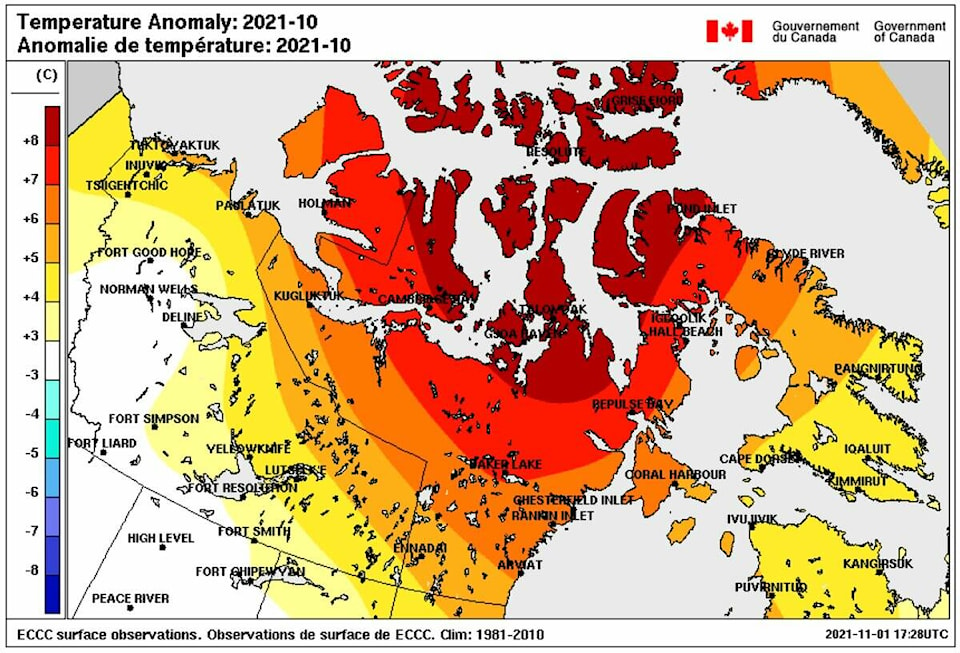Every year, the NWT Power Corporation produces an annual report.
Every year, that report displays a pie chart breaking down the types of power generated across the territory.
Every year, forms of renewable energy combined are represented by a narrow line in that pie chart indicating about one per cent.
Yet the NWT Crown corporation professes every year to put more focus on renewable and alternative energy.
It may be happening, but it’s happening at a dreadfully slow pace.
To the NWT’s credit, hydro accounts for about three-quarters of the territory’s power and it’s much cleaner than diesel. To the east, in Nunavut, all communities are powered by dirty diesel.
As it stands, the NWT accounts for less than 0.2 per cent of Canada’s greenhouse gas emissions.
And yet the territorial government sent four delegates to the annual Conference of the Parties climate change summit, better known as COP26 in Scotland, last month. None of those four delegates was Indigenous, in a territory where the population is half Indigenous. Abysmal.
The GNWT contends that because the North is experiencing the effects of climate change at a more accelerated pace than other areas of Canada – approximately three times faster – there’s value in participating in the yearly meeting of the minds.
Let’s not argue that point. We share concerns about worsening wildfires in our region and others, coastal erosion in the Beaufort Delta, a shrinking ice road season and so on.
But is any of that helped by spending $45,200 to send two MLAs and four senior civil servants overseas? Did the $27,600 specifically dropped on airfare (two first-class seats, FYI) and ground transportation – all producing carbon dioxide emissions – amount to a counterproductive step?
It sure seems incongruent.
What the Covid-19 pandemic has demonstrated is that many things that used to be carried out in-person, can be accomplished online: professional duties, school work and meetings.
Yes, meetings.
Why, oh why, wouldn’t NWT delegates and others around the world meet virtually to do business? It makes perfect sense.
On Wednesday, Environment Minister Shane Thompson was on the figurative hot seat (one not heated by fossil fuels, at least) when he was asked whether the territory will match the federal government’s commitment to reduce greenhouse gas emissions by between 40 and 45 per cent of 2005 levels by 2030 and achieve net zero emissions by 2050.
The GNWT would need more money from Ottawa to make that happen, Thompson said.
The NWT minister has a meeting scheduled with his federal counterpart to discuss this issue on Monday, Dec. 13.
So this is what it really boils down to, as usual: greater investment from the Government of Canada.
Again, did we need to send four people to Scotland when that’s really the longstanding issue at hand?
Next year when it comes time for COP27, keep the GNWT delegation at home, save the money, save the emissions and participate via the internet.
Let’s face it, the environmental targets set at these climate change conferences often turn out to be moving goalposts anyway.
If we continue to see NWT Power Corporation annual reports showing an almost non-existent portion of renewable energy and no substantial reduction in diesel, then all the politicians’ stated goals remain hot air anyway.
